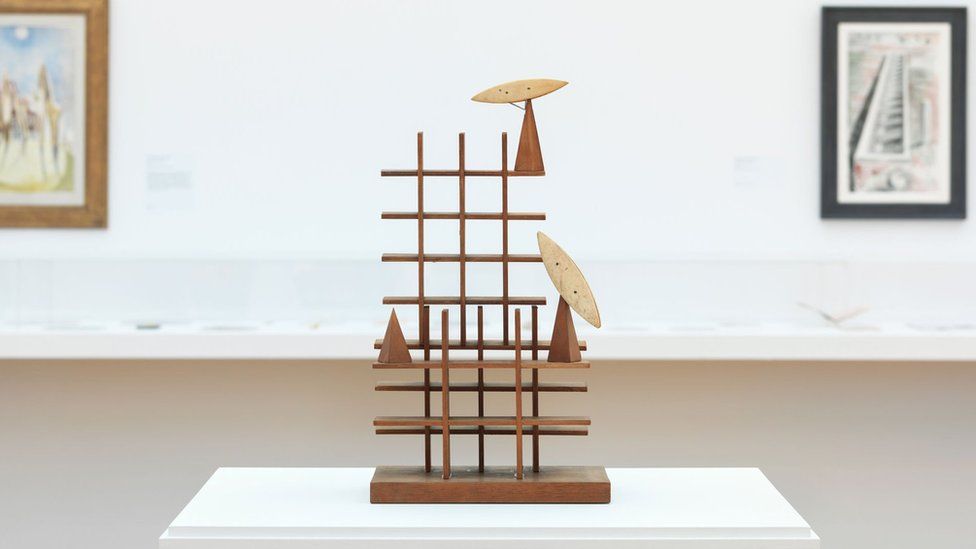Paul Nash sculpture found in cardboard box reassembled for Tate Britain show
- Published

A surrealist sculpture by British war artist Paul Nash discovered in pieces in a cardboard box will go on show this week at Tate Britain.
Moon Aviary, last exhibited in 1942 and thought lost for decades, was found this year in a London archive.
It has been reassembled for a major retrospective of Nash's work that opens on Wednesday.
"It was an immensely exciting moment," the show's co-curator Emma Chambers told the BBC.
"It's the sort of moment that you really dream of as a curator, where something that you thought no longer existed suddenly pops up."
The 1937 artwork had been thought by art experts to be lost or destroyed.
Moon Aviary had last been shown at surrealist exhibitions in Britain in the late 1930s and early 1940s.
The new Tate Britain show is billed as the largest exhibition of the artist's work for a generation, covering all of Nash's output from early watercolours through to his final landscapes.
For Moon Aviary, Nash used wooden egg crates to form the framework, with bobbins balanced on triangular forms to represent perching birds.
Ms Chambers said Tate Britain had been contacted in May after a box containing "pieces of wood and ivory bobbins" was found in a privately-owned art archive.
When she compared the contents to photographs from the 1940s it quickly became clear that it was the missing sculpture.
"There were a few other things we were approached about, but this was the one where we all looked at each other and went, 'Wow - we can't believe this really survived,'" she said.
The reassembled work was installed in the exhibition on Friday alongside three other surviving surrealist assemblages.
Best known for his work as a war artist during the two world wars, Nash was a pioneer of British Modernism.
He drew much of his inspiration for his landscapes from the Downs and coastal areas of southern England.
The exhibition runs at Tate Britain until 5 March.
Follow us on Twitter @BBCNewsEnts, on Instagram, or if you have a story suggestion email entertainment.news@bbc.co.uk.
- Published28 July 2015